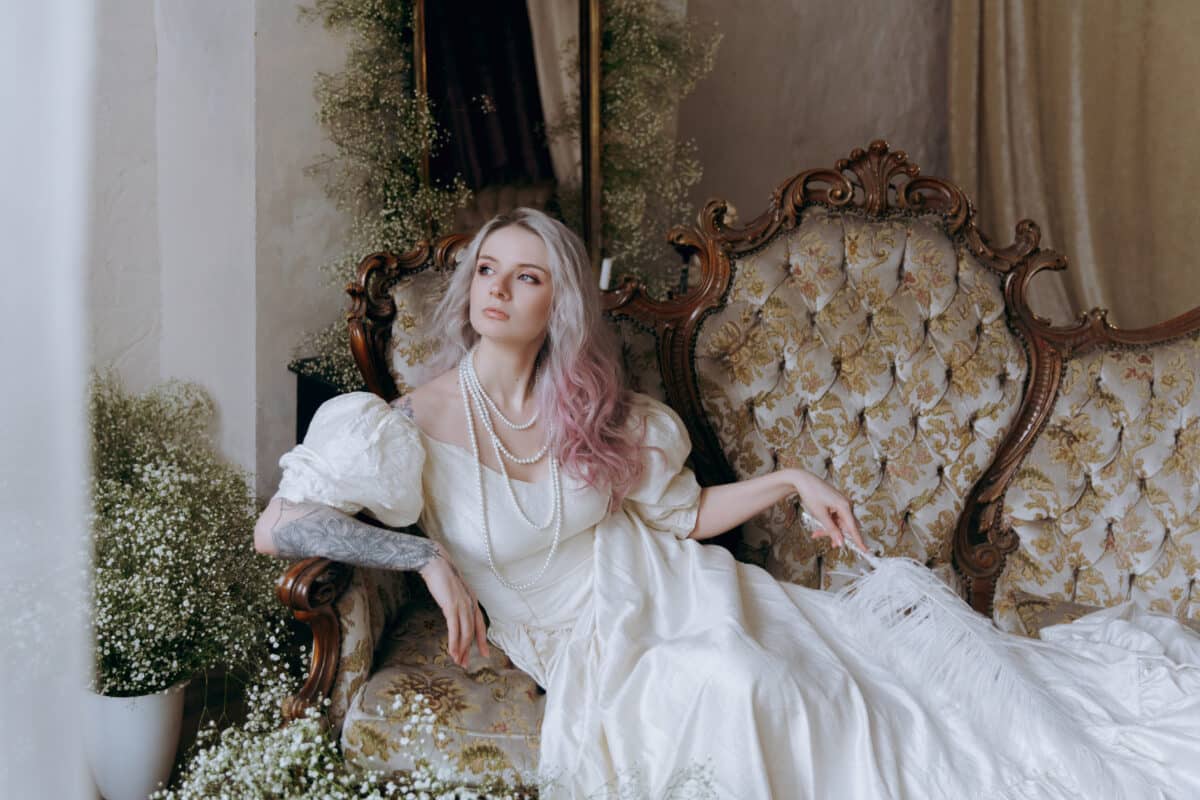Here’s what the Diminishing Verse poetry form is:
The diminishing verse is a poem form that only has one rule.
The last word of each line gradually “diminishes” from one line to the next, usually by removing one or two letters from the beginning of the word.
An example of this would be the transitions from “scat” to “cat” to “at.”
So if you want to learn all about the Diminishing Verse poetry type, then you’ve come to the right place.
Keep reading!
- Schuttelreim Poetry Form: Be a Master in Rhymes
- Chant Poetry Form: Harness Your Inner Strength
- Occasional Poetry Form: Honor Life’s Milestones
- Rhymed Poetry Form: Master the Art of Harmony
- Formal Poetry Form: Polish Precision in Poetry
- Metered Poetry Form: Paint Words With Precision
- Lyric Poetry Form: Sing Your Story

Forms of Poetry: Diminishing Verse

Diminishing verse is a unique poem form in that it technically only has one stipulation.
The end word of each line will “shrink” by a letter or a sound with each line, depending on the poet’s interpretation of the form.
These poems are commonly written in tercets, stanzas with three lines each.
The common understanding is that the diminishing word stops being used at the end of the stanza, with any extra stanzas taking on new words.
You could technically write a poem in diminishing verse that uses the same end word(s) in every stanza, but it would be unorthodox.
Basic Properties of Diminishing Verse

| Rhyme Structure | Often triplets (tercets sharing a common end sound) |
| Meter | Unmetered |
| Origins | Unknown |
| Popularity | Uncommon; tends to appeal to children |
| Theme | Varied; Often playful |
How is the Diminishing Verse Structured?

Aside from the trademark “diminishing” of the last word in each line, diminishing verse is actually a very liberal form of poetry.
There is no predefined meter or length.
Lines do not need to have a set number of syllables.
It would be very close to a free verse poem if not for the one property that sets the poem apart.
The most interesting part comes in how you define “diminishing.”
In the strictest definitions of the form, one letter is removed from the beginning of the word with each new line.
So draft becomes raft becomes aft. (Yes, aft is a real word.)

Some definitions of diminishing verse also specifically refer to it as a triplet form, meaning that it would be written in sets of three lines that all share an end sound.
There’s nothing really stopping you from writing diminishing verse in larger or shorter stanzas but do be aware that tercets are the most common variant.
While some sources leave it at that, there are others that specify certain allowances to make it easier to work with the form.
For example, you could remove two or more letters instead of just one.
Or you could remove a sound instead of a letter (so thought could become aught despite the different spelling).

The most liberating interpretation allows the writer to remove letters or sounds from anywhere in the word, so long as the end word continues to shrink with each new line.
While this is the least challenging, it also has the most creative potential since there will be less pressure to make a limited selection of words work.
A creative combination of these last interpretations would be reducing quicksand to quick and then to wick (by removal of consonant sound).
It should be noted that accepting this version of the form means you’re also allowing the poem’s rhyme scheme to fall apart, but some writers may consider this a small sacrifice for the sake of greater creative freedom.
Examples of Diminishing Verses

Trim and a Shear
A man can call himself rather smart
if he turns raw materials from the mart
into a meaningful work of art.
It may take a quick trim and a shear
but soon you will be sure to hear
news of his work as it reaches your ear.
The above poem is an example of strict diminishing verse.

Each stanza is a triplet, three lines with shared end sounds, and the end word loses exactly one letter each time which is always at the beginning of the word.
Take note that the poem does not employ any other specific traits, such as meter, syllable count, etc.
The end sounds actually lock you into fairly rigid options on their own, so most poets opt to not up the challenge, especially as diminishing verse tends to be seen as a “for fun” form.
The title and phrase “trim and a shear” is a bit of wordplay, referencing the basic premise of the poem as the words literally trim themselves down.

After Afternoon
I sit upon the sofa, predisposed
to laziness as I dispose
of all pretenses to strike a slothful pose.
I cannot help but proliferate
the idle nature of my irate
mind here, at any rate.
This example takes on a much more lenient approach.

In this case, any number of letters or sounds are permitted to leave the word, including entire prefixes and suffixes.
This makes for a much more casual experience, perhaps befitting the topic in this case.
Again, the title here is a playful jab at the form.
In this case, the title toys with an inversion of the expectation of the form, with after expanding into the afternoon, though the poem itself sticks to diminishing verse throughout.
This poem does stick with tercets for the stanza lengths, but you could potentially throw this norm away too.
The main problem with doing so is that diminishing verse gets more repetitive and more difficult the longer it is.
Three lines tends to be the sweet spot.
Tips for Writing Diminishing Verse

The poem will be nearly entirely decided by the first end word you choose, so choose wisely.
Options for how to break down that word will depend on which interpretation you’re going with, but you should try to shoot for words that are around a medium length (5-7 letters) in most cases.
Long words tend to not break down cleanly when going by the strictest definition (removing one letter) while short words simply have fewer and fewer words to break down into.
If using the least restrictive definitions, then a longer word may actually work better for you, since it will represent a cornucopia of options with how to proceed.

It’s often recommended that you keep your lines a little on the longer side (8+ syllables).
This is only a general rule of thumb but giving yourself more space to work with on each line allows you to more easily transition toward the next word, without the poem derailing into unintelligible gibberish.
The biggest challenge of the form is in making it seem natural.
There are many words that break down into unrelated words, like marrow reducing to arrow, so it can be hard to justify the next word unless you’re a flexible thinker.
Ideally, the poem will have a cohesive narrative and will actually use each line to forward that narrative.

Similarly, try to maintain a connection across stanzas. If each stanza is functionally a different poem, then there’s no inherent value to publishing it as one poem instead of a collection of individual tercets.
If you’re going to write three stanzas of diminishing verse, keep them connected somehow.
If you find this form too easy, since it does only have one restriction, then feel free to up the difficulty.
You can set a certain number of syllables per line, assign meter to the poem, include internal rhyme on every third line, etc.
Poetry lovers enjoy seeing experimentation, so don’t be afraid to set your own rules and see what you can come up with.
Poet’s Note

Do you know how angry it makes me to write “unknown” under the origin of a poem? It’s infuriating.
I can’t find concrete evidence of the first poet, the first group, or even the first country to employ this style of poetry.
The modern concept of the triplet has been around since at least 16th century England but diminishing verse, specifically?
Couldn’t tell you. Probably relatively new. Emphasis on probably.
Comprehensive Collection of Poetry Forms: Craft Words Into Art

Dare to traverse the entire spectrum of poetic forms, from the commonplace to the extraordinary?
Venture from the quintessential Sonnet to the elusive Mistress Bradstreet stanza, right through to the daunting complexity of Cro Cumaisc Etir Casbairdni Ocus Lethrannaigecht.
For those with a zeal to encounter the full breadth of poetry’s forms, this invitation is yours.
Start exploring the vast universe of poetic ingenuity with our comprehensive array of poetry forms right now!
- Schuttelreim Poetry Form: Be a Master in Rhymes
- Chant Poetry Form: Harness Your Inner Strength
- Occasional Poetry Form: Honor Life’s Milestones
- Rhymed Poetry Form: Master the Art of Harmony
- Formal Poetry Form: Polish Precision in Poetry
- Metered Poetry Form: Paint Words With Precision
- Lyric Poetry Form: Sing Your Story
